A worm crawls along an elastic band that’s 1 meter long. It starts at one end and covers 1 centimeter per minute. Unfortunately, at the end of each minute the band is instantly and uniformly stretched by an additional meter. Heroically, the worm keeps its grip and continues crawling. Will it ever reach the far end?
Author: Greg Ross
Penny Wisdom
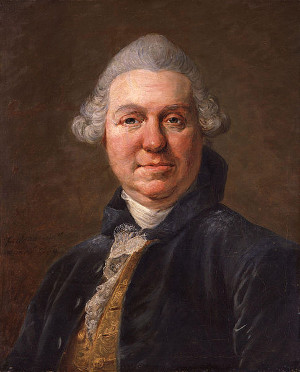
Samuel Foote on “the advantages of not paying our debts”:
It is the art of living without money. It saves the trouble and expense of keeping accounts; and makes other people work, in order to give ourselves repose. It prevents the cares and embarrassments of riches. It checks avarice, and encourages generosity; as people are commonly more liberal of others’ goods than of their own: while it possesses that genuine spark of primitive Christianity, which would live in a constant communion of all property. In short, it draws the inquiries and attention of the world on us while we live, and makes us sincerely regretted when we die.
Mr. Mysterious

‘Count Dracula?’ He bowed in a courtly way as he replied:–
‘I am Dracula; and I bid you welcome, Mr. Harker, to my house.’
In Bram Stoker’s Dracula, how does Dracula know Harker’s name? Harker bears a letter of introduction from Peter Hawkins, but Dracula has not seen it yet, and it does not identify Harker by name.
For that matter, why does Dracula go to England? He says, “I long to go through the crowded streets of your mighty London, to be in the midst of the whirl and rush of humanity, to share its life, its change, its death, and all that makes it what it is.” Couldn’t this be done, and more safely, in any other European city?
John Sutherland writes, “If he must do it, why not choose Germany, which at least would shorten the distance back to his lair and would not entail passing over the dangerous element of water?”
(John Sutherland, The Literary Detective, 2000.)
Mouse Call
Letter from E.B. White to Harper & Brothers editor Eugene Saxton, March 1, 1939:
Herewith an unfinished MS of a book called Stuart Little. It would seem to be for children, but I’m not fussy who reads it. You said you wanted to look at this, so I am presenting it thus in its incomplete state. There are about ten or twelve thousand words so far, roughly.
You will be shocked and grieved to discover that the principal character in the story has somewhat the attributes and appearance of a mouse. This does not mean that I am either challenging or denying Mr. Disney’s genius. At the risk of seeming a very whimsical fellow indeed, I will have to break down and confess to you that Stuart Little appeared to me in a dream, all complete, with his hat, his cane, and his brisk manner. Since he was the only fictional figure ever to honor and disturb my sleep, I was deeply touched, and felt that I was not free to change him into a grasshopper or a wallaby. Luckily he bears no resemblance, either physically or temperamentally, to Mickey. I guess that’s a break for all of us.
Saxton pressed for a fall publication, but Stuart Little wouldn’t appear until 1945. “I pull back like a mule at the slightest goading,” White said.
Black and White
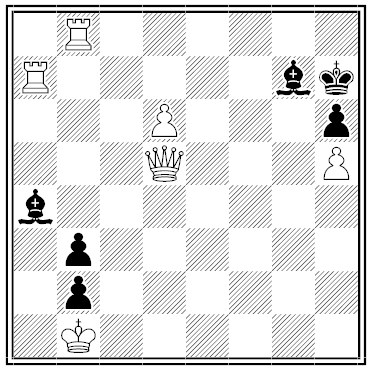
By C.H. Wheeler, from the Dubuque Chess Journal, December 1877. “White to play and compel self-mate in two moves” — that is, White must force Black to checkmate him in two moves.
Thoughtful
A jester being on his death-bed, one of his companions begged when he got to the other world, he would put in a good word for him. ‘I may perhaps forget,’ said he; ‘tie a string about my finger.’
— The Laughing Philosopher, 1825
Adrift
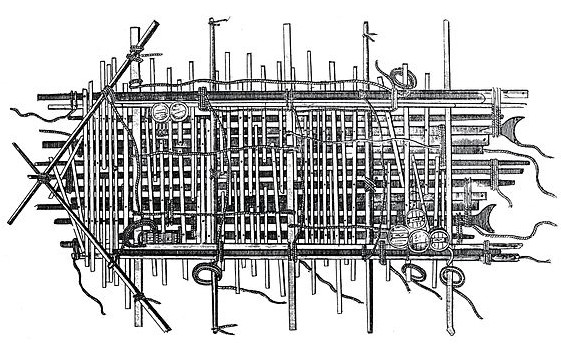
En route to Senegal in 1816, the French frigate Méduse ran aground on a reef. The six boats were quickly filled, so those who remained lashed together a raft from topmasts, yards, and planks, and 147 people crowded onto a space 65 feet long and 23 wide, hoping to be towed to the African coast 50 miles away. (Seventeen crew and passengers remained aboard the Méduse.)
The raft sank 3 feet under their combined weight, and the tow line quickly parted. Rather than try to rescue them, the boats sailed on to the Senegalese capital. On the first night, 20 men drowned. On the second, some soldiers broke open a cask of wine and mutinied; in the ensuing melee, at least 60 were killed. By the following afternoon, the 67 who remained were gnawing sword belts to reduce their hunger. Eventually they descended on a corpse embedded among the logs of the raft. “We shudder with horror on finding ourselves under the necessity of recording that which we put into practice,” one wrote later.
On the fourth day, 48 remained, and that night a second mutiny killed 18 more. By the seventh day their numbers had dropped to 27 and they decided that their provisions would support only 15, so the 12 weakest were thrown to the sharks. The last 15 survived for 13 miserable days, living on garlic cloves, a lemon, and occasionally a flying fish. They were finally spotted by the brig Argus, a moment immortalized by Théodore Géricault (below).
Of the 17 who had remained aboard the Méduse, three survived. One told his story to a survivor of the raft journey, who wrote, “They lived in separate corners of the wreck, which they never quitted but to look for food, and this latterly consisted only of tallow and a little bacon. If, on these occasions, they accidentally met, they used to run at each other with drawn knives.”
For all this, the captain of the Méduse was imprisoned for only three years, an occasion for lasting controversy in French politics. “It is more difficult to escape from the injustice of man,” wrote one commentator, “than the fury of the sea.”
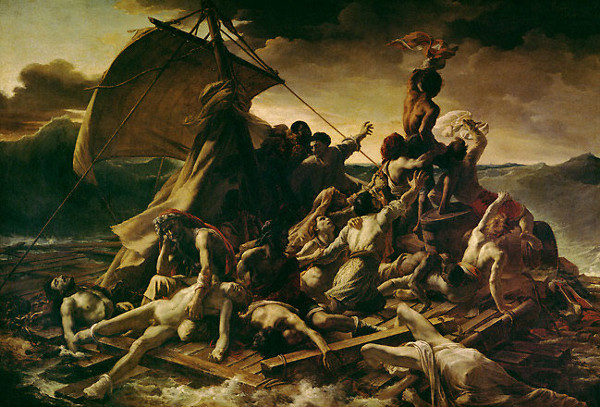
In a Word
impavid
adj. fearless
There was a young fellow named Weir
Who hadn’t an atom of fear;
He indulged a desire
To touch a live wire,
(‘Most any old line will do here!)
— Anonymous, quoted in Carolyn Wells’ Book of American Limericks, 1925
Collision
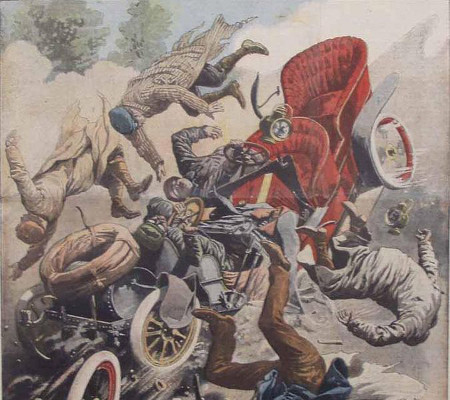
Some insurance policies declare themselves inapplicable to injuries or losses that are covered by other policies. What happens if an injured person holds two such policies?
If the provisions are interpreted strictly, “then each would become inapplicable,” notes Earlham College philosopher Peter Suber. “But as soon as they were inapplicable, they would each trigger the other’s applicability again, and so on.”
“The policy-holder would either be entitled to nothing or to benefits from at least one policy, to be determined by an unending and indeterminable oscillation of liability.”
Heads Up
As airplanes began to populate the skies over Europe and America, they met an unexpected adversary — eagles. “Some of the adventures of aviators with eagles have been harrowing in the extreme,” reported the Associated Press in 1928. “An airplane was flying over the mountains [behind Athens] recently when several eagles swooped down and attacked it simultaneously. Their dashes at the machine so crippled it that the pilot was forced to descend quickly, and landed so badly that he and a passenger were injured.”
In Adventures With a Texas Naturalist (1975), Roy Bedichek reports that such encounters were reported as early as World War I and were still taking place 60 years later. He writes that pilot J.O. Casparis was flying over Texas’ Big Bend National Park when “an enormous eagle crash-dived his plane before he could shoot, tore through the window, ripped off several feet of the fuselage and showered him with shattered glass.” And J. Wentworth Day reported an attack by two eagles on a three-motored, all-steel passenger plane near Allahbad, India: “The first eagle flew straight in the middle engine, while the second dived from ten thousand feet, and went through the steel wing like a stone, ripping a great hole.”
Bedichek writes that, after the first attacks, the French army seriously considered training eagles to attack enemy planes, and the British Air Ministry issued instructions on the best tactics to pursue during eagle attacks. “Of course, modern planes have little to fear from eagles or other birds individually,” he notes, “but the encountering by plane of migration flights, especially of flights of large birds in considerable number, is said still to offer a considerable hazard.”
